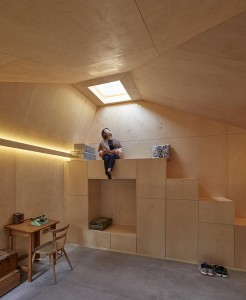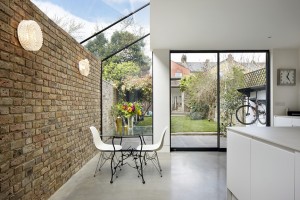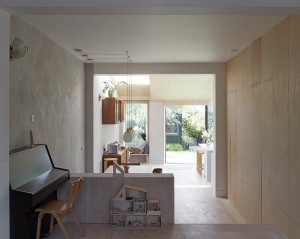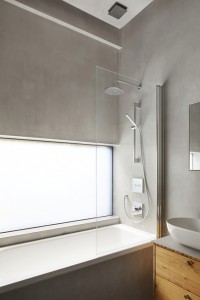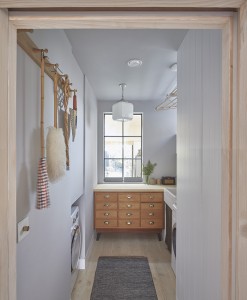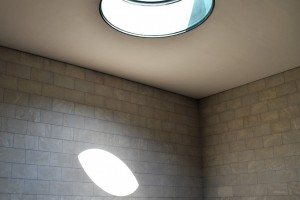As an architect with over two decades of experience in creating thoughtful, sustainable designs, I’ve encountered countless homeowners who dream of extending their homes. Perhaps you’ve often wondered about the possibilities a large extension could bring to your living space? Many share this dream – a chance to transform their home into an expansive haven filled with creative, exciting interior spaces that they love. If that sounds like you, then you’ve landed in the right place.
However, an inevitable question soon follows: How big can you build? How far can you extend? Well, I have some good news for you. Under the ‘prior approval larger home extension mechanism’ and thanks to permitted development rights, you can build a significantly large house extension.
In today’s discussion, we’ll delve into the nitty-gritty of this process. We’ll explore the prior approval procedure in detail, provide insights into how to extend your terraced, semi-detached, or detached house, and guide you through the specific conditions you need to comply with for a prior approval house extension. I’ll also share tips on how to sail smoothly through the neighbour consultation scheme and get your consent with ease. So let’s get started.

What is the Prior Approval Mechanism for Larger Home Extensions?
First, let’s understand what the prior approval mechanism is. According to Part 1 Class A of the permitted development rights, you can construct a large single-storey rear extension as long as you meet the requirements of the Town and Country Planning (General Permitted Development) (England) Order 2015, without seeking explicit planning permission. This is often referred to as the prior approval larger home extension mechanism, or the neighbour consultation scheme.
So how large can your extension be if you use a prior approval application? In a terraced or semi-detached property, permitted development rights allow you to extend the rear of your house by up to six metres. In a detached property, the allowance extends to a whopping eight metres. Quite a spacious addition.
However, you must remember to take these measurements from the original rear wall of your property and adhere to certain conditions, which we’ll explain shortly.
Which Properties are Excluded from the Neighbour Consultation Scheme?
The prior approval legislation for larger house extensions does exclude some properties from the scheme. These include flats or maisonettes, statutorily listed buildings, properties within a conservation area, National Park, area of outstanding natural beauty, World Heritage Site or a site of special scientific interest, and properties that have had permitted development rights removed due to a planning condition or through an Article 4 direction.
If your property falls into one of these categories, you won’t benefit from the prior approval for a larger home extension scheme. But don’t worry – I can assure you there’s still a solution. A very large house extension is still possible by submitting a householder planning permission with the aid of professional extension architects. The end results are often the same or even better.
What are the Conditions I Need to Comply with to Build My Large House Extension?
Building your dream extension will require you to meet certain conditions as per Part 1 Class A of The Town and Country Planning (General Permitted Development) (England) Order 2015. I’ve summarised these for you below:
- Your proposed extension should be a single story.
- If the extension goes beyond the line of the side of your house, it can’t be wider than half the width of the existing house.
- The proposed extension should not exceed 4 meters in height, as measured from the highest point of natural surface ground.
- If your extension is within two meters of the boundary of the house, the eaves of your proposed extension should not exceed three meters in height.
- The proposed extension should cover no more than half the area of land around the original house (as it was on 1 July 1948 or if it was built later, as it stood when built).
- The materials used should match the existing appearance of your house.
Adherence to these conditions is crucial. Failure to comply may result in your application being rejected.
How to Apply for Prior Approval to Build a Larger Home Extension
Submitting your prior approval application for a larger home extension allows you to build an extension between 4 and 8m in length beyond the original rear wall for a detached house and between 3 and 6m for all other houses. However, to build under the prior approval neighbour consultation scheme, you need to apply to your council for prior approval – a process distinct from a typical planning application.
This application allows your council to consider whether your proposed extension meets the conditions outlined in the prior approval legislation and the likely impact of your extension on your neighbours’ homes. When submitting your application, be sure to provide the following information:
- A detailed description of your proposed extension.
- Planning drawings with existing and proposed floor plans and elevations, along with measurements.
- The addresses of any adjoining premises.
- Your contact details.
Remember, construction should not commence until the notification and prior approval process is complete. If the extension is already built, you’ll need to submit a retrospective full planning application, which I would advise against.
What Happens When You Submit a Prior Approval Application?
After receiving your prior approval application, your council will consult your adjoining neighbours by letter, initiating a minimum consultation period of 21 days. If your council doesn’t receive any comments within this period and decides that your proposal meets all the necessary conditions, your extension will be considered permitted development, meaning further planning consent is not required.
If your council doesn’t decide within 42 days from the date the application is valid, you have the right to submit an appeal to the Planning Inspectorate for non-determination.
What Happens if My Neighbours Object to My Prior Approval Application?
If your neighbours object to your proposed development, your council must assess the impact of your extension on all adjoining premises’ “amenity”. If further information is required at this stage, your extension architects and planning consultants can submit factual evidence to prove that your extension won’t detrimentally impact neighbouring properties. After assessing your application and any objections received, your council will issue a decision.
Can My Council Refuse My Large Home Extension Application?
Achieving approval for a planning application, including a prior approval application, requires a fair amount of skill and experience. If your application gets refused, you have the right to submit an appeal to the Planning Inspectorate against the refusal. The local planning authority cannot consider any other planning matters when determining a prior approval application.
Can I Start Building My Extension Straightaway?
You should not commence construction of your large house extension without receiving a written notice from your council. Following approval, the next stage is seeking building control approval before commencing construction work. Be sure to notify your council as soon as reasonably practicable after the completion of works.
How Can RISE Design Studio Help You?
RISE Design Studio is a London-based RIBA Chartered Architecture practice. With a special focus on design and planning strategies and expertise in residential extensions, conversions, and new build homes, we help homeowners create spaces they love living in.
If you would like to talk through your project with the team, please do get in touch at mail@risedesignstudio.co.uk or give us a call on 020 3290 1003.
RISE Design Studio Architects company reg no: 08129708 VAT no: GB158316403 © RISE Design Studio. Trading since 2011.

